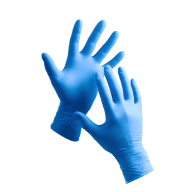Sir Safety System Magic Fobia Low Shoe Black/Lime Green
Product description
Product Features:
- Metal-free low shoe
- Air-Mesh upper
- Polyester lining for improved foot aeration
- Fiberglass toecap
- Composite puncture-resistant midsole
Technical Details:
- Standard: EN ISO 20345 S1PS FO SR
Insole:
- Multi-perforated EVA material
- Anti-shock properties
- Variable thickness: 3 mm front, 10 mm heel
- Polyester lining
- Antistatic
Sole:
- PU/PU construction
- Special design for high drainage in presence of liquids
- Constant 4 mm thickness midsole
Identifies the protective material in the toe cap that shields against impacts and compression. Different materials offer varying levels of protection, weight, and comfort.
The method used to secure the shoe to your foot, affecting ease of putting on/removing, adjustability for comfort, and workplace safety.
Indicates whether the footwear has protective reinforcement (Safety) or no special toe protection (Plain), affecting workplace safety compliance and injury prevention.
Enhances stability on slick surfaces, reducing the risk of slips and falls. Designed for reliable grip and secure footing in various work environments.
Withstands degradation from oil exposure, maintaining sole integrity and extending shoe life. Ensures reliable traction in oily environments.
Reduces impact on feet and joints, lessening fatigue during long hours on hard surfaces. Provides enhanced comfort for demanding work environments.
The interior fabric that touches your foot, affecting comfort, moisture control, and temperature regulation during long work shifts in demanding environments.
Defines the substances used in construction that impact safety, durability, comfort, and protection from workplace hazards like impacts, chemicals, or electricity.
The material composition of the shoe's bottom portion that determines slip resistance, durability, and protection against workplace hazards like chemicals, heat, or punctures.
- Impact Resistance
- Electrical Protection
- Slip Resistant
Request a free sample
Test first and buy later. Visit any product page to request your free sample.
Standards and labels
EN ISO 9001:2015 is a standard that sets out the requirements for a quality management system (QMS). It is a set of guidelines that organizations can follow to ensure that they meet customer requirements and enhance customer satisfaction. The standard is based on the plan-do-check-act model and focuses on continuous improvement. It covers the design, development, production, installation, and servicing of products. Organizations can get certified to this standard, which means that they have been independently audited and found to meet the requirements of the standard. The certification process includes regular audits to ensure that the organization continues to meet the standard's requirements.
Test results
Service Reliability PassedISO 14001:2015 is a standard that specifies requirements for an environmental management system (EMS). It includes requirements for how companies should design, implement, maintain and improve their EMS to ensure that they minimize negative impacts on the environment and comply with environmental regulations. Test results can include information on how well the EMS is functioning, how well it is being followed, and how effective it is in reducing environmental impacts. The standard also includes requirements for how the company should document and record their EMS performance and continuously improve it.
Test results
Environmental Management PassedThe standard ISO 14001:2015 pertains to environmental management systems (EMS). A passed test result under this standard indicates that an organization's EMS meets the stringent criteria set forth for managing environmental responsibilities systematically. This ensures sustainable development while considering environmental impacts. Specifically, ISO 14001:2015 includes requirements for a framework that an organization can follow rather than establishing environmental performance criteria. It encompasses various aspects such as compliance obligations, planning actions to address risks and opportunities, and continual improvement. The test primarily involves evaluating the effectiveness of the EMS in supporting a company to achieve its intended outcomes regarding its environmental performance. If a company has passed this evaluation, it reflects their commitment to environmental stewardship, potentially enhancing their marketability and aiding in compliance with statutory and regulatory requirements.
Test results
General Requirements CRThe standard EN ISO 20345:2011 encompasses general requirements for safety footwear to ensure they provide adequate protection in various occupational environments. Rating 'CR' signifies that the footwear has a cut resistant upper ensuring enhanced protection. The test method involves assessing the material's resistance to splitting or cracking under certain conditions, which simulates real-world industrial hazards involving sharp objects or surfaces. Practically, this result ensures that the footwear is suitable for environments where there is a risk of materials splitting or getting caught, thereby providing essential safety benefits to the user.
General Requirements FOThe standard EN ISO 20345:2011, specifically its General Requirement FO, pertains to footwear containing fuel oil-resistant outsoles. When footwear under this specification successfully meets the FO requirement, it implies that the footwear's outsole has been tested and confirmed to resist degradation due to contact with fuel oil. The test involves exposing the outsole material to fuel oil for a determined period, typically 22 hours, at a controlled temperature of 22°C. This test assesses the change in volume and properties of the outsole following fuel oil exposure by measuring its tensile strength and elongation before and after the exposure. For procurement professionals, a positive FO result indicates that the footwear's outsole will maintain its mechanical performance and integrity when in contact with fuel oil, making it suitable for industries where oil exposure is frequent, providing durability and reliable performance under such conditions.
General Requirements S1PThe EN ISO 20345:2011 standard sets the benchmark for safety footwear designed to protect users from injuries and accidents in diverse environments. The S1P designation under this standard refers to footwear that has 200 joules toe cap, fully enclosed heel, anti-static protection, energy absorption in the heel, and penetration resistant midsole. The test for the S1P requirement involves ensuring that the footwear has a resistant toe cap tested against a 200-joule impact, electrical resistance testing under defined conditions to confirm anti-static properties, and penetration resistance, where the sole is tested against a force of at least 1100 Newtons. Moreover, the heel region of the footwear is required to absorb energy, thereby reducing impact during wear. These criteria make EN ISO 20345:2011 S1P certified footwear ideal for environments where sharp objects, electric charge, and heavy impact risks are prevalent, thereby guaranteeing a high safety standard for wearers in such conditions.
CE Marking is a label that shows a product meets certain safety and environmental standards set by the European Union. To get the CE Marking, a company must test and certify their product meets these standards. CE Marking is required for many products sold in the EU, including electronics, machinery, toys and medical devices. It helps ensure that products are safe for consumers and the environment, and allows for easy trade within the EU.
PPE stands for "personal protective equipment." PPE Category 2 refers to equipment that is more complex, and has a higher level of risk. Examples of PPE Category 2 include safety helmets, ear protection, and fall arrest equipment. In Europe, PPE Category 2 must meet certain safety standards set by the European Union, which means that it must be designed and manufactured to protect the user without causing harm. Companies that make or sell PPE must prove that it meets these standards. They also must have a quality management system in place and have to be audited regularly by a notified body.
SIR SAFETY SYSTEM delivery terms
Free delivery when you order more than 150,00 € from SIR SAFETY SYSTEM
Supplier shipping fee 6,33 €
Brand minimum 150,00 €
42,48 €
Price per pair
42,48 € / pair
Shipping fee is 6,33 € for orders under 150,00 €
Sold in units of one pair
Need larger quantities?
Other products you may like
Recently viewed
Need help?
Get help from our experts
Other products you may like
Similar products you may like
Recommended for you
SIR SAFETY SYSTEM
Delivery time: 7 business days
Orders from 150,00 €
Supplier shipping fee 6,33 €
Free shipping on orders over 150,00 €



Find +150,000 products from hundreds of brands
Autonomous sourcing platform
The most efficient way to source and order supplies for your operations
Sourcing
Ordering
List products you’re looking for and we’ll find the best products and prices for you – all for free.
Need help?
Get help from our experts
